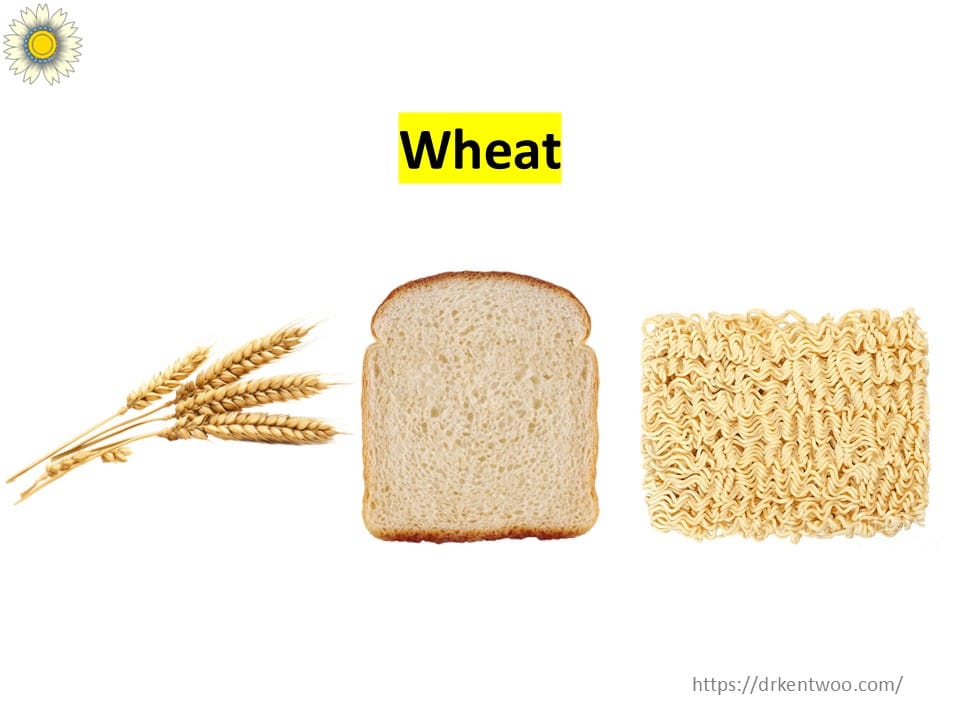Wheat Allergy: Foods to Avoid & Safe Alternatives

Wheat allergy is an immune reaction to proteins found in wheat, such as gluten, albumin, globulin, and gliadin. It differs from celiac disease (an autoimmune reaction to gluten) and gluten intolerance. If you have a wheat allergy, avoiding all sources of wheat is crucial to prevent allergic reactions.
Foods That Contain Wheat (Avoid These!)
Obvious Sources of Wheat
- Bread, bagels, biscuits, crackers, croutons
- Pasta, noodles, couscous
- Wheat flour (all-purpose, whole wheat, enriched, etc.)
- Wheat-based cereals
- Bulgur, farina, semolina
- Matzo, seitan (made from wheat gluten)
- Tabbouleh (a Middle Eastern dish made with bulgur)
Less Obvious Sources of Wheat
- Bran, wheat germ, wheat berries
- Durum, einkorn, emmer, spelt, kamut (all are types of wheat)
- Vital gluten (used in baking & meat substitutes, including some Chinese vegetarian meals)
- Malt & malt extract (can be derived from wheat)
Foods That May Contain Wheat (Check Labels!)
⚠ Some foods may not list “wheat” but could still contain wheat-derived ingredients:
- Artificial & natural flavoring (can contain wheat)
- Caramel color (sometimes derived from wheat)
- Dextrin, maltodextrin (check the source)
- Modified food starch, food starch (often from wheat)
- Vegetable gum, vegetable starch (check labels)
- Hydrolyzed or textured vegetable protein (HVP/TVP)
- Monosodium glutamate (MSG) (can be derived from wheat)
- Oats (may be cross-contaminated unless labeled gluten-free)
- Soy sauce, shoyu sauce, tamari, teriyaki sauce (often contains wheat)
Wheat Allergy and Cross-Reactivity with Barley and Rye
While wheat allergy refers specifically to an allergic reaction to wheat proteins, some individuals may also react to barley and rye due to their similar protein structures.
Barley and Rye: What to Know
✔ Barley: Found in malt, beer, malt vinegar, and some cereals. It contains gluten and can trigger reactions in sensitive individuals.
✔ Rye: Common in rye bread and rye-based alcoholic drinks. It also contains gluten and can be problematic for those with wheat allergies.
✔ Cross-Reactivity: Some people with wheat allergy may also react to barley and rye. Always check labels and consult an allergist if unsure.
Safe Wheat Alternatives
Wheat-Free Grains & Flours
✅ Whole Grains:
- Rice, rice flour
- Corn, cornmeal
- Quinoa
- Oats (certified gluten-free)
- Sorghum
- Millet
- Amaranth
- Buckwheat
✅ Wheat-Free Baking Alternatives:
- Almond flour
- Coconut flour
- Potato starch
- Chickpea flour
- Cassava flour
- Arrowroot
- Tapioca
FAQs About Wheat Allergy
Is wheat allergy the same as celiac disease?
🚫 No. Wheat allergy is an immune response to wheat proteins, while celiac disease is an autoimmune condition triggered by gluten (found in wheat, barley, and rye).
Does gluten-free mean wheat-free?
⚠ Not always. A product labeled gluten-free does not always mean it’s 100% wheat-free, as some gluten-free products may contain wheat starch (without gluten). Check labels carefully!
Can I eat spelt, einkorn, or emmer if I have a wheat allergy?
🚫 No! These are all ancient types of wheat and still contain the same proteins that trigger wheat allergy.
Are oats safe for wheat allergy?
⚠ Maybe. Oats do not naturally contain wheat, but they are often processed in the same facilities, leading to cross-contamination. Look for certified wheat-free or gluten-free oats.
Can I have soy sauce if I have a wheat allergy?
🚫 Most soy sauces contain wheat. Instead, use tamari (wheat-free soy sauce) or coconut aminos as a substitute.
What about malt and caramel coloring?
⚠ Malt (like malt vinegar, malt extract) is often derived from barley or wheat. Caramel coloring may be derived from wheat but is usually safe. Always check the label.
The Allergy Immunology Clinic is here to help you with your food allergy.




